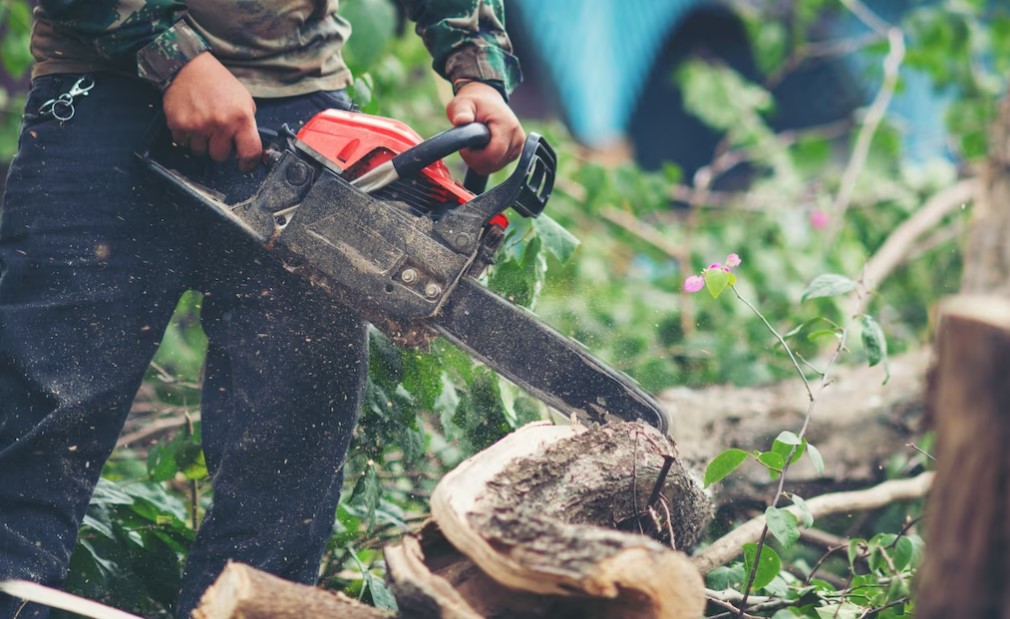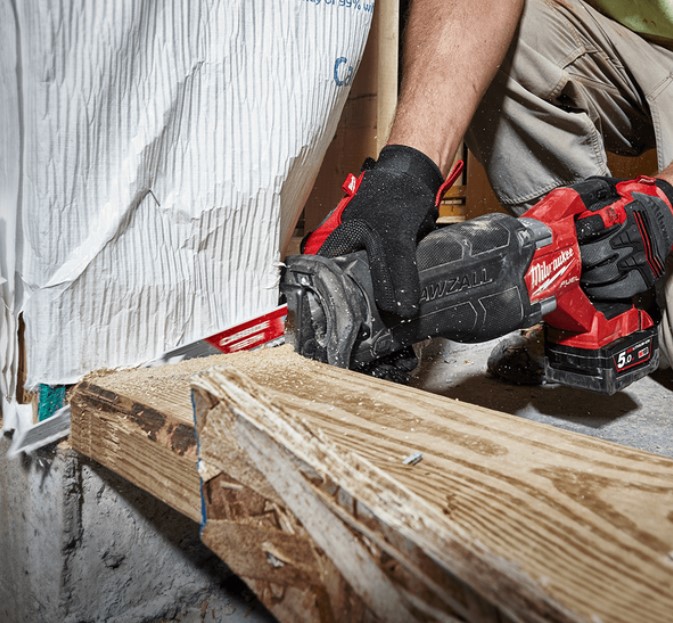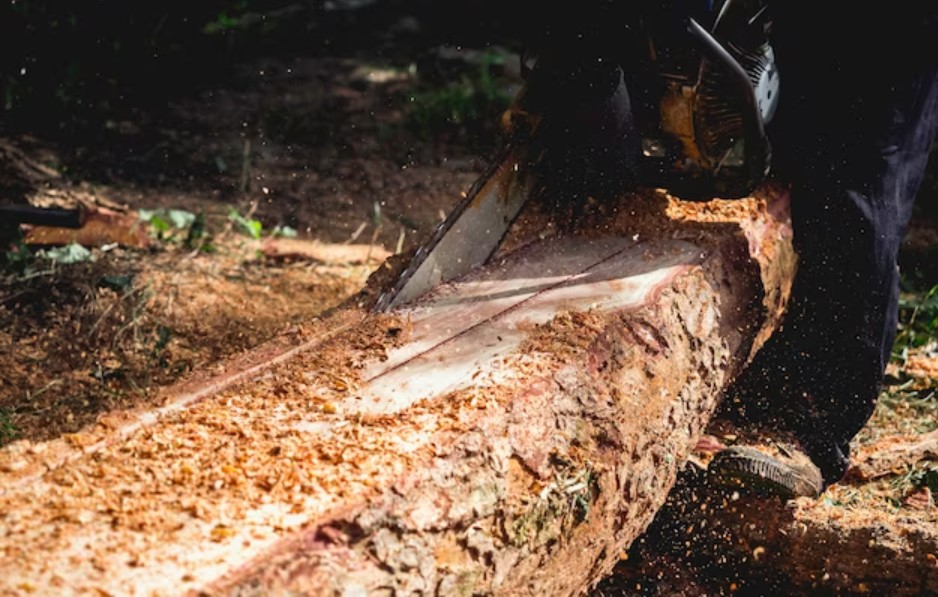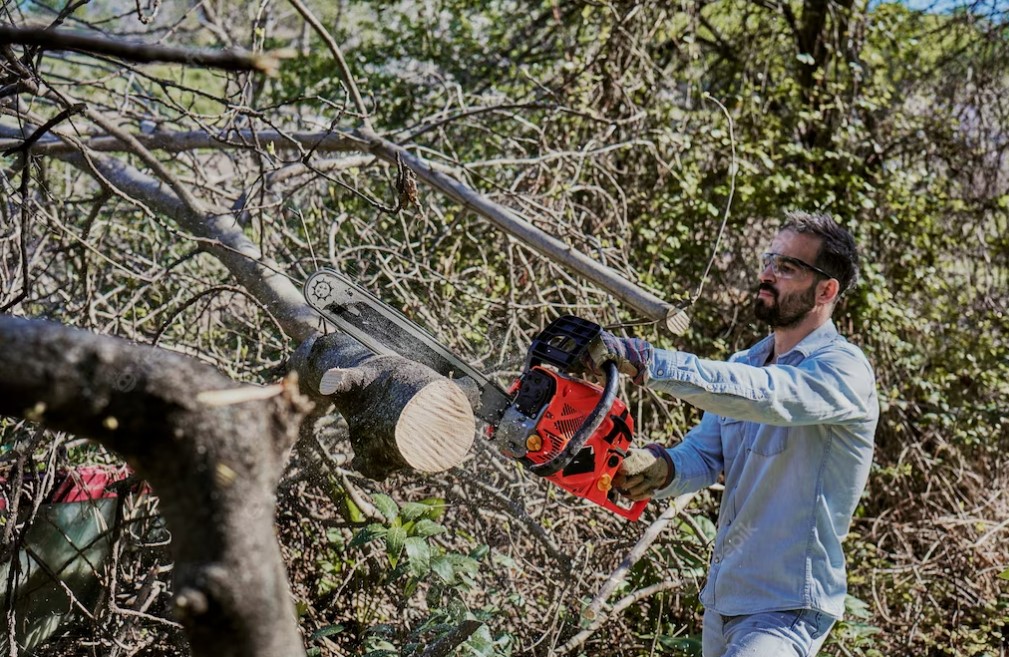Chainsaw vs Reciprocating Saw: Selecting the Ideal Tool for Your Cutting Projects
Both reciprocating saws and chainsaws are frequently used for woodworking, but which is more efficient? In the dynamic domain of heavy-duty cutting, these tools stand as prime contenders, each bearing its unique strengths and applications. This exploration analyzes their various mechanisms, dimensions, safety aspects, and uses, allowing you to navigate the question Chainsaw vs Reciprocating Saw: A Comprehensive Comparison with caution. Which option buying one, the other, or both, is preferable? While each type is capable of carrying out identical activities, each also specializes in a certain field. This article will give you get the hang of chainsaw vs reciprocating saw.
Chainsaw Vs Reciprocating Saw Similarities
Both are engineered for exceptional cutting efficiency. Chainsaws, with their toothed chains rotating around a guide bar, excel at swiftly severing larger sections of wood, making them ideal for tasks like tree felling and lumber processing. Similarly, reciprocating saws, with their back-and-forth cutting motion, are adept at quickly slicing through a variety of materials, including wood, metal, and plastic, making them invaluable in demolition and remodeling projects.
Both chainsaws and reciprocating saws showcase remarkable versatility, adapting to different materials and cutting scenarios. Chainsaws, though renowned for their wood-cutting prowess, can be equipped with specialized chains to cut through metal or concrete. Reciprocating saws, too, are available with an array of blades suitable for various materials, expanding their usability across construction, plumbing, and electrical tasks.

Despite differences in size and design, both tools prioritize portability. Chainsaws are available in various sizes, including compact and cordless models, allowing users to navigate dense vegetation or confined spaces with ease. Reciprocating saws, often cordless and ergonomically designed, ensure maneuverability in tight corners or overhead positions, enhancing user comfort during extended use.
Chainsaws and reciprocating saws are designed to provide accessibility to challenging cutting scenarios. Chainsaws’ long guide bars reach remote branches or difficult angles while reciprocating saws’ slim profiles and adjustable shoe depths enable precise cutting even in congested areas.
Modern chainsaws and reciprocating saws embrace both electric and fuel-powered options. Electric chainsaws and reciprocating saws offer consistent power with minimal maintenance, while fuel-powered variants deliver greater mobility and extended runtime in remote locations.
Both tools prioritize safety, integrating mechanisms such as chain brakes in chainsaws to prevent kickback and blade guards in reciprocating saws to shield users from debris. Additionally, advancements in technology have led to the incorporation of safety sensors and ergonomic designs for user protection.

Electric chainsaw vs reciprocating saw: What’s the difference?
When it comes to cutting through tough materials or tackling outdoor projects, having the right tool can make all the difference. Electric chainsaws and reciprocating saws are two versatile options that cater to different cutting needs. Let’s delve into their key differences across various aspects to help you determine which tool best suits your requirements.
Blade Motion
One of the primary distinctions between an electric chainsaw vs reciprocating saw lies in their blade motion. Electric chainsaws, as the name suggests, utilize a rotating chain that moves around a guide bar. This circular motion allows them to cut through thick branches and logs with relative ease, making them ideal for landscaping and tree maintenance. On the other hand, reciprocating saws feature a back-and-forth (reciprocating) motion of the blade, akin to a jigsaw. This motion makes reciprocating saws more suitable for precise cutting and controlled maneuvers in various materials, such as metal, plastic, and wood.
Sawing Capacity
When it comes to sawing capacity, electric chainsaws typically excel at handling larger and thicker materials due to their design and power. They are commonly used for heavy-duty tasks like felling trees, cutting firewood and clearing overgrown vegetation. Reciprocating saws, while versatile, are generally better suited for tasks that require intricate cuts or cutting in tight spaces, like demolition work or pruning smaller branches.

Raw Power & Speed
Electric chainsaws typically boast greater raw power and cutting speed compared to reciprocating saws. This higher power allows them to effortlessly slice through dense wood, making them a top choice for tasks demanding brute force. Reciprocating saws, while not as powerful, compensate with their agility and precision, making them ideal for controlled cuts and detailed work.
Balance & Precision
Reciprocating saws hold an advantage in terms of balance and precision. Their compact design and oscillating blade make them easier to handle and maneuver, especially in confined spaces. This precision makes reciprocating saws a favored tool for DIY enthusiasts and professionals alike when intricate cutting or shaping is required.
Durability
When it comes to durability, electric chainsaws often have the upper hand due to their robust construction and heavy-duty design. They are built to withstand the rigors of outdoor use, including exposure to tough weather conditions and rough terrain. Reciprocating saws, while durable, may not fare as well in heavy-duty applications and may require more frequent maintenance.

Noise
In terms of noise levels, reciprocating saws are generally quieter compared to electric chainsaws. Electric chainsaws, powered by motors driving the rotating chain, tend to produce louder noise levels during operation. Reciprocating saws, which utilize a back-and-forth blade motion, offer a more subdued noise profile, making them a preferable option for environments where noise needs to be minimized.
Power Source
Both electric chainsaws and reciprocating saws are powered by electricity, making them more eco-friendly and cost-effective than their gas-powered counterparts. Electric chainsaws are typically corded, limiting their range of movement, while reciprocating saws are available in both corded and cordless (battery-powered) options, providing greater flexibility.
Safety
Both tools require proper safety precautions during use. Electric chainsaws pose a higher risk due to their powerful cutting action and potential kickback. Adequate protective gear, including chainsaw chaps, helmets, and gloves, is crucial when operating them. Reciprocating saws, while generally safer, still, necessitate protective equipment to prevent injury from debris or accidental contact with the blade.

Chainsaw vs Reciprocating Saw – Which Is Safer?
Safety is paramount when using any power tool, and both chainsaws and reciprocating saws come with their own set of safety considerations. Understanding the potential risks associated with each tool can help users make informed decisions and adopt appropriate safety measures.
How Safe Are Chainsaws?
Chainsaws are powerful cutting tools designed for heavy-duty tasks like tree felling, branch trimming, and firewood cutting. However, their high-speed rotating chain and aggressive cutting action also pose inherent risks. One of the primary safety concerns with chainsaws is kickback, a sudden and forceful backward movement of the saw that can occur when the chain’s tip encounters an object or material. Kickback can lead to loss of control and serious injuries.
To mitigate the risks associated with chainsaws, users should adhere to several safety precautions:
- Wear Appropriate Safety Gear: Always wear protective equipment such as chainsaw chaps, helmets with face shields, gloves, and steel-toed boots to safeguard against potential injuries from debris and kickback.
- Proper Training: Proper training in chainsaw operation and maintenance is essential to understand how to safely handle the tool and minimize the risk of accidents.
- Maintain the Saw: Regular maintenance, including keeping the chain sharp and well-tensioned, helps prevent unexpected malfunctions that could lead to accidents.
- Safe Cutting Techniques: Adopt safe cutting techniques to reduce the risk of kickback, such as keeping the saw’s tip away from objects and maintaining a firm grip on the handle.

How Safe Are Reciprocating Saws?
Reciprocating saws, also known as seawalls, are versatile tools commonly used for demolition, pruning, and precision cutting in various materials. While they generally have a more controlled cutting motion compared to chainsaws, they still come with their own safety considerations.
To enhance safety when using reciprocating saws:
- Protective Gear: Wear safety glasses, gloves, and ear protection to shield against debris, vibrations, and noise.
- Secure Workpiece: Ensure the workpiece is securely clamped or held in place to prevent movement during cutting, reducing the risk of accidental slips.
- Blade Selection: Choose the appropriate blade for the material you’re cutting to optimize efficiency and reduce the likelihood of the blade getting stuck.
- Work Environment: Maintain a well-lit work area and clear away any obstacles that could hinder safe operation.
- Controlled Movements: Keep a steady grip on the saw, maintaining control over its movement and avoiding unnecessary twisting or sudden motions.

Which Saw is Best for Pruning?
When it comes to pruning, selecting the right tool can significantly impact the efficiency and outcome of your landscaping or tree maintenance tasks. Two popular options for pruning are the reciprocating saw and the chainsaw. Let’s explore the strengths and weaknesses of each to help determine which saw is best suited for your specific pruning needs.
Reciprocating Saw
Best for
Light to medium pruning tasks, precision cuts, detail-oriented work, smaller branches, shrubs, and small trees.
Pros:
- Precision Cutting: The reciprocating saw’s back-and-forth blade motion allows for controlled and precise cuts, making it ideal for intricate pruning work and shaping.
- Maneuverability: Its compact design and versatility make it easy to navigate tight spaces and awkward angles, enabling you to reach branches that may be challenging with larger tools.
- Versatility: Reciprocating saws are not only suitable for pruning but also for various DIY projects involving cutting through different materials like wood, metal, and plastic.
Cons:
- Limited Power: Reciprocating saws are generally less powerful than chainsaws, which may limit their efficiency when dealing with larger branches or tougher wood.
- Slower for Thicker Branches: While effective for smaller branches, using a reciprocating saw for thicker branches might take more time and effort compared to a chainsaw.
Chainsaw
Best for
Larger pruning jobs, heavy-duty tasks, thicker branches, and trees.
Pros:
- Cutting Power: Chainsaws offer superior cutting power, enabling you to tackle larger branches and even small trees with greater ease and efficiency.
- Speed: Due to their robust motor and chain mechanism, chainsaws can make quick work of even the toughest pruning jobs, saving you time and effort.
- Versatility: In addition to pruning, chainsaws are versatile tools capable of handling a range of outdoor cutting tasks, including felling trees, cutting firewood, and clearing debris.
Cons:
- Size and Weight: Chainsaws are generally bulkier and heavier than reciprocating saws, which might make them less maneuverable and suitable for precision work.
- Kickback: Chainsaws have a higher risk of kickback due to their circular cutting motion, necessitating careful handling and protective gear to minimize potential accidents.

FAQs
What is the difference between Chainsaw vs Reciprocating Saw?
A reciprocating saw utilizes a back-and-forth motion of the blade, making it suitable for precision cuts, detail-oriented work, and navigating tight spaces. Chainsaws, on the other hand, use a rotating chain around a guide bar and are better suited for heavy-duty tasks involving thicker branches and larger trees.
Which saw is better for precision cuts on smaller branches?
For precision cuts on smaller branches, a reciprocating saw is generally more suitable due to its controlled blade motion and maneuverability. It allows for accurate cuts in confined spaces and delicate pruning tasks.
Can beginners use a chainsaw for pruning?
While beginners can use a chainsaw for pruning, it’s crucial to undergo proper training and practice safe usage. Chainsaws require more skill to handle safely, as they are more powerful and have a higher risk of kickback. Beginners should consider starting with a reciprocating saw for smaller tasks and gaining experience before transitioning to a chainsaw.

Are Chainsaw vs Reciprocating Saw safer for pruning?
Reciprocating saws are generally considered safer for pruning due to their controlled blade motion and reduced risk of kickback. However, both tools have their own safety considerations. Proper training, protective gear, and adherence to safety guidelines are essential regardless of the chosen tool.
Conclusion
The best saw, when comparing a reciprocating saw with a chainsaw, will mostly depend on the type of jobs you will be working on. Chainsaw vs Reciprocating Saw: A Comprehensive Comparison highlights that while chainsaws offer unmatched cutting power for larger jobs, reciprocating saws excel in precision and maneuverability, particularly for smaller branches. Safety remains paramount, with beginners often finding reciprocating saws a more user-friendly option. Ultimately, your decision should align with the task’s scale, your experience level, and a commitment to implementing proper safety measures to ensure successful and secure pruning outcomes.
Related Articles